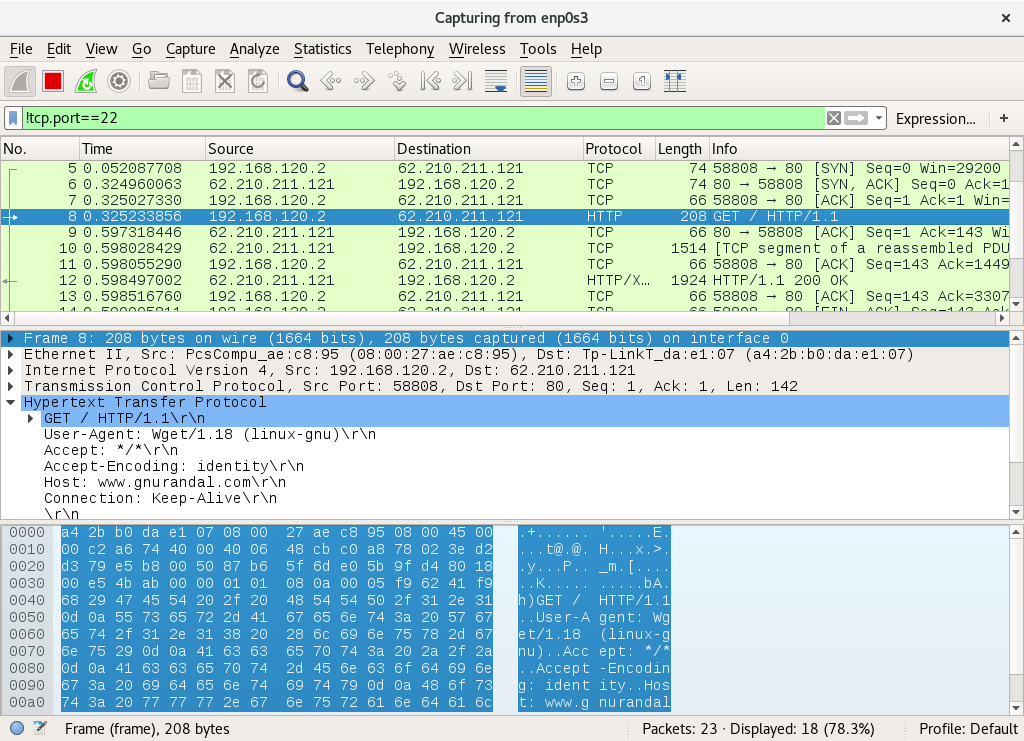

- #ANALIZING WIRESHARK CAPTURES FULL#
- #ANALIZING WIRESHARK CAPTURES WINDOWS#
This is the ideal device to be placed within data centers or any high performance environment, and is capable of running multiple captures simultaneously. NetShark – This is a dedicated appliance for high performance data captures.
#ANALIZING WIRESHARK CAPTURES WINDOWS#
This includes data and control frames, primarily used for Windows devices as Linux based devices already have the proper access to capture wireless control frames.
AirPcap – This tool is used for capturing packets over wireless networks. Know the proper tool to use – Believe it or not depending on what you are trying to capture there are quite a few different tools that can be part of your arsenal. Keep the timing in sync will also be quite helpful in identifying where any (if any) specific delays are occurring. This will help identify and track specific traffic flows and conversations that are occurring between separate capture files. Time – This can be an easily overlooked option, however when you are analyzing packets you will want to make sure that the clocks are synchronized between all devices involved. Ensuring some additional due diligence is taken before you get down into the weeds and start using Wireshark. It also provides you the opportunity to review the network path in between the nodes in question. Remember the key is to capture on both sides of the conversations or where you suspect the problem might be, this provides you the before and after picture of each device interacting with the traffic flow. This can typically happen due to fragmentation or MTU issues. Here we are capturing traffic on both sides of a VPN tunnel, similar to the firewall example from above it’s important to make sure the VPN is not causing any unintended communication issues. This allows us to see whether or not there is packet loss between nodes, or if possibly if one of the nodes is experiencing heavy processes or load delays, among a host of other things. Capturing close to the two device in question allow us to see the perspective of the conversation from both endpoints. There are times when this can negatively affect impact performance or make it difficult to properly analyze packets within Wireshark. Firewalls have a tendency of altering the TCP parameters with the packet headers depending on their configuration.  By capturing on both sides of the firewall, we can see how the firewall interacts with the packets. In the above example, we have two captures setup in front of two servers on the separate sides of a firewall.
By capturing on both sides of the firewall, we can see how the firewall interacts with the packets. In the above example, we have two captures setup in front of two servers on the separate sides of a firewall. #ANALIZING WIRESHARK CAPTURES FULL#
It is also best to ensure you are capturing on both sides of the conversation to ensure you can see the full scope of the conversation. This can assist with your analysis or it can actually hinder your analysis. It’s important to remember when you are analyzing packets you are viewing the packets from the perspective of the capture point.
 Placement – Knowing where to capture is key. Lets go over a few best practices when using Wireshark to make sure you get the most out of it. However there are a few quick an easy tricks you can use to ensure you are getting the most out of your packet captures. There are definitely many variables out there that make capturing and analyzing data a very convoluted and difficult. Wireshark can be a very powerful however getting the most out of this tool can be tricky.
Placement – Knowing where to capture is key. Lets go over a few best practices when using Wireshark to make sure you get the most out of it. However there are a few quick an easy tricks you can use to ensure you are getting the most out of your packet captures. There are definitely many variables out there that make capturing and analyzing data a very convoluted and difficult. Wireshark can be a very powerful however getting the most out of this tool can be tricky.







 0 kommentar(er)
0 kommentar(er)
